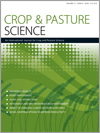Agricultural research, in pursuing its aim to improve sustainable productivity, spans the full range of levels of organisation in plants, from genes to crop canopies. The various levels (e.g. cells, tissues, organs) deal with different scales, processes and structures, each having its own terms, which are generally not widely understood across all levels. Improved productivity comes from fostering the active flow of pertinent ideas across these levels, developing them so that they can eventually be of direct benefit to crops.
CP20066 Abstract | CP20066 Full Text | CP20066PDF (445 KB) Open Access Article





